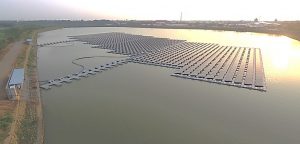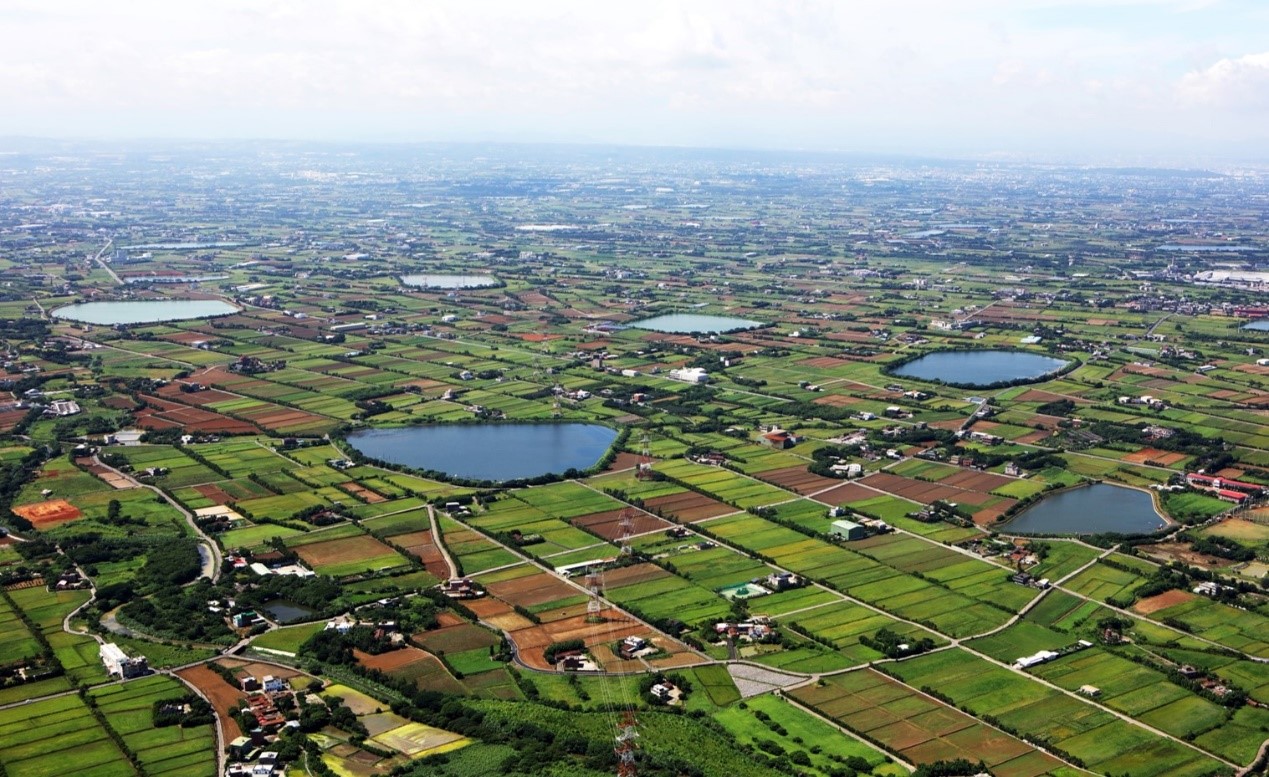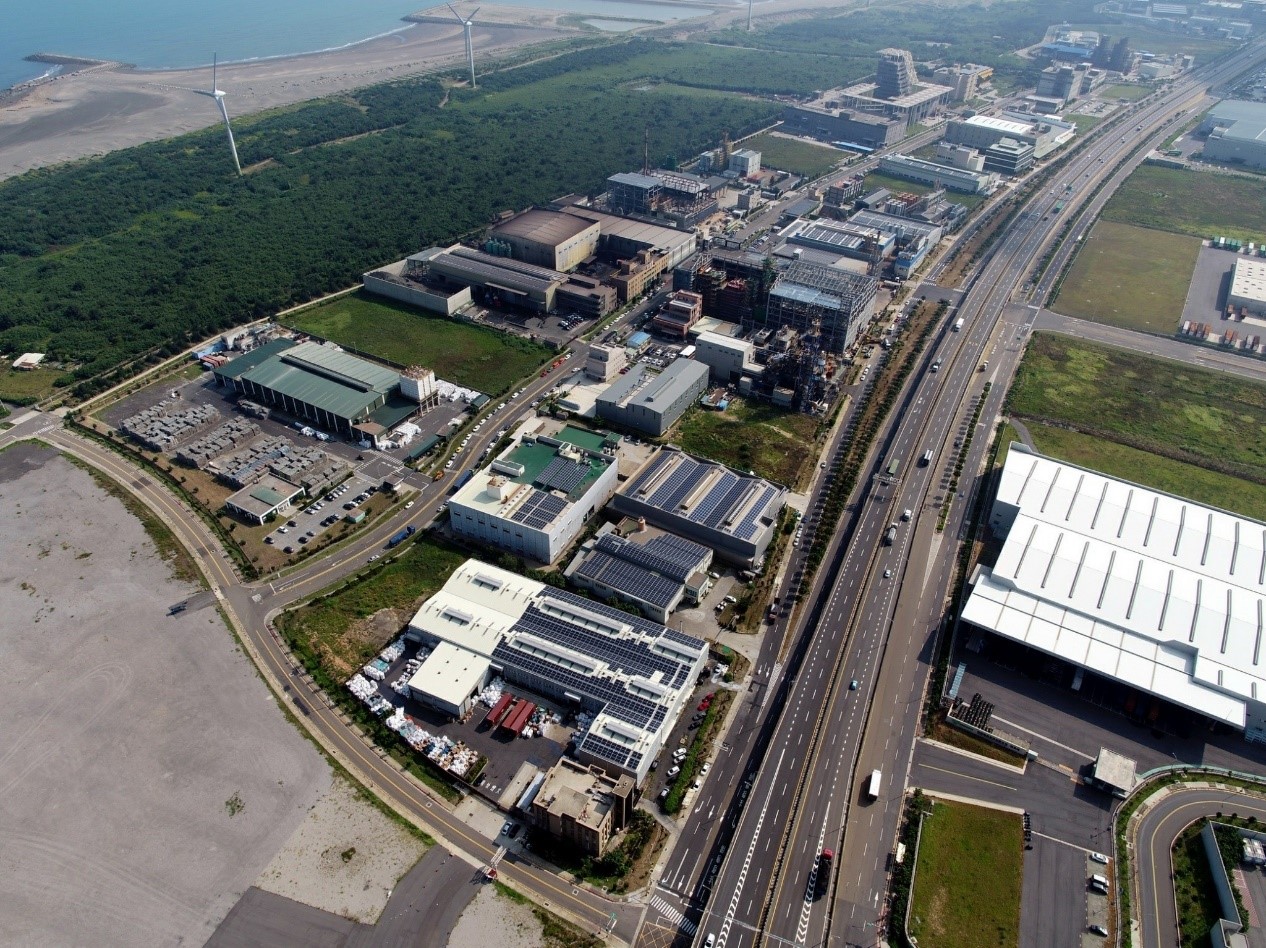
I.Background
Surrounded by mountains and the ocean, Taoyuan, the gate of Chinese Taipei and the axis of Asia, has distinctive natural and cultural environment. The City was upgraded to a municipality in 2014 and is now the sixth and the youngest municipality of Chinese Taipei. The 29 industrial zones within the city contribute an enormous amount to the country’s output value each year, making it the No.1 production center and economic window of Chinese Taipei. With its efforts to continuously expand its development and recruit business in recent years, Taoyuan has succeeded in attracting a number of global enterprises, such as Apple, Cisco, Good and Microsoft, to make an investment in the region. Nevertheless, this also resulted in relatively higher energy consumption in the City comparing with other regions in the country. By taking electricity as an example, the City’s electric energy consumption is about 13.6% of the country’s total, forcing the City to think about a solution for energy sustainability. In order to have a balanced economic development and energy stainability, Taoyuan has, starting from 2014, expanded its development of renewable energy. Besides, incorporating the country’s objectives of energy transformation, the City now aims to develop the non-polluting wind energy, hydraulic energy and solar energy in order to reach the target of having 20% of renewable energy, 30% of coal energy and 50% of gas energy by 2025.
Taoyuan is one of the most successful examples of energy transformation in the country. In the past, due to the longer daylight hours in the south, photovoltaic companies had been proactive in investing in solar energy resources in Southern Chinese Taipei. Northern Chinese Taipei, on the other hand, was less attractive to these companies due to its shorter daylight hours. However, upon its upgrade to a municipality in 2014, Taoyuan not only broke with the traditional concepts of photovoltaic companies, but also proactively negotiated with them to make a mission impossible into a mission possible. Through legal regulations, subsidies, consultations and demonstrations, the City eventually managed to vigintuple (x20) its solar energy installed capacity. Besides, Taoyuan City Government has been proactive in integrating the development of renewable energy; established the “Green Energy Promotion Office” to integrate resources of all divisions and departments; and created one single window to speed up the promotion of green energy and the development of this industry.
II.Implementation Methods
1.Establishment of city-government-level “Green Energy Promotion Office” to integrate the City’s green energy policies and development
As the most potential municipalities of developing green energy in the north, Taoyuan has proactively promoted the development of renewable energy. According to the energy policy rank published by Energy Transformation Promotion Alliance in 2018, Taoyuan City is ranked in the country’s 4th place for its performance excellence; is in the 1st place with respect to renewable energy installed capacity in northern Chinese Taipei; and received the Best Progress Award.
2.Implementation of green energy promotions
(1)An optimal use of space – development of solar energy:
A.
In 2015, the City launched the “Program of Leasing and Installing Roof Photovoltaic Systems in Public Housing” to install the solar energy devices in buildings owned by the City with an expectation that the public departments will enhance people’s cognition on photovoltaic systems. In the meantime, the City’s Department of Economic Development also started to launch the Photovoltaic System Installation Subsidy Programs for Private Housing.
B.
In 2017, the City held a number of educational and promotional activities designed for targets of different groups, and the renewable energy promotion and matching seminar. The purposes are to move the renewable energy education to the lower age group to enhance students’ cognition thereon; and to encourage people, companies and industries to install renewable energy generation facilities to increase the City’s green energy ratio.
C.
In 2017, the City developed the characteristic photovoltaic ponds in the region and, through self-governance ordinance, requested large electricity users to source renewable energy with specific ratio (10%).
D.
In 2018, the City continued to promote the green energy policy “Generate Your Electricity” among enterprises of Taoyuan Environmental Science and Technology Park; and roof photovoltaic systems were successfully installed.
(2)Advantages of the City – wind energy:
A.
Currently: Chinese Taipei Strait is a very good wind farm. In fact, 16 among the 18 best offshore wind farms are located in Taiwan Strait. Featuring strong occasional monsoons, Taoyuan is particularly potential in the field. This is reason that on-land wind power has long been developed in the City, and that it is where Chinese Taipei’s on-land wind power is centralized. The City has 57 large turbines possessed by Taiwan Power Company (36), Guanwei (19) and Taowei (2). The total installed capacity of these turbines can supply the electricity to 29,000 families.
B.
At the installation stage: To support the policy of Bureau of Energy, Ministry of Economic Affairs in promoting offshore wind energy, Taoyuan City will establish an offshore wind farm with a total installed capacity of 350 MW in Guanyin District and Dayuan Districts. Upon its estimated completion in 2021, the site is expected to generate about 120 GWh of electricity each year, which will be supplied to 16,000 families of Taoyuan.
(3)An optimal use of resources – hydraulic energy:
The City plans to, in lower stream of Shihmen Reservoir, establish a 90 MW hydraulic turbine to generate energy with the water of the reservoir. Besides, with respect to the dam established in the phase two plan of Shihmen Reservoir catchment area, the City will establish a 40 MW hydraulic turbine downward to generate energy with the elevation gap of curving river course. In the total installed capacity of these two turbine generators are expected to reach 130 MW.
(4)Urban evolution – establishment of biomass energy center
Promote Taoyuan Environmental Science and Technology Park as the resource cycling demonstration park. Chinese Taipei is the Country’s No.1 industrial technology city. Not only has one third out of the Country’s top 500 manufacturing enterprises built factories in Taoyuan, but also the industrial output value of Taoyuan has been ranked in the country’s first place for nine consecutive years. Taoyuan now has merely one incineration plant. Challenged by the enormous volume of trash, the City plans to, through the BOT project, build a three-in-one biomass energy center featuring the functions of anaerobic digestion, thermal treatment unit and solidified landfill in Taoyuan Science and Technology Industrial Park. The site, which is about 4.38 ha and is designated for the establishment of environmental protection facilities, will collaborate with the Park’s industrial waste disposal industry to reach the objectives of “self-management of trash”, “establishment of a waste cycling supply chain of Taoyuan” and “A cycling and eco-friendly science park with zero waste, low pollution, diverse disposal solutions and sustainability”.
The biomass energy center will accept household trash from local residents, wastes of Taoyuan Science and Technology Industrial Park and general industrial wastes within Taoyuan County with priority in order to provide local enterprises a stable waste disposal capacity. The Center is expected to launch its official operations in July of 2021. Upon its completion, this Center will become the country’s biggest biomass energy plant and will generate about 200 MWh per year (that is, electricity required by 60,000 families per year).
III.Implementation Results
1.Strategic promotions and matches
Since the beginning of these promotions, the government has not only done great efforts in introducing relevant programs to various target groups, but also launched relevant matching activities among the device suppliers and enterprises. This has attracted a number of big domestic enterprises to build production facilities and offices in the City. In 2018, the City’s total installed capacity for solar energy is about 123.7 MW, which has trevigintupled (x23) comparing with the number before its upgrade (into a municipality) and is about 5.2% of the country’s total and the No.1 in the north (among cities and counties located in north of Miaoli County).
2.The benefits of solar photovoltaic energy generation mainly from the following photovoltaic devices:
(1)“Program of Leasing and Installing Roof Photovoltaic Systems in Public Housing”
From 2015 to 2017, the roof photovoltaic system was established in 126 agencies and schools of Taoyuan, with a total installed capacity of 13.8 MW. In 2018, the phase III tendering project was launched with an objective of establish photovoltaic systems with a total installed capacity of more than 3MW.
(2)“Photovoltaic System Installation Subsidy Programs for Private Housing”
From 2015 to 2018, the City has totally subsidized 190 cases with a total amount of NT$75,000,000 and installed capacity of 17.4 MW. In 2019, the City Government will continue to promote the establishment and implementation of renewable energy resources, where the energy storage equipment will also be subsidized apart from roof photovoltaic systems. The purpose is to encourage factories and big electricity users to install energy storage facilities.
(3)Photovoltaic ponds
To maintain the balance between its ecological landscape, environment and the energy generation policy, Taoyuan City Government has conducted an assessment and the results indicated that the energy generation efficiency of photovoltaic pond is 10% more comparing with that of land devices. Therefore, it established the country’s first photovoltaic pond at Taoyuan Agriculture Expo as a demonstrative pond, and then 7 more photovoltaic ponds in the City. The total installed capacity of these 8 ponds is about 26.9 MW.
(4)“Land Revitalization of Landfill”
The City has selected 5 out of all rehabilitated landfills to establish the photovoltaic system with a total installed capacity of 3MW. These systems are expected to generate 3.15 GWh per year.
IV.Economic benefits:
1.Electric energy generation:
As the City’s total installed capacity for cumulative renewable energy is about 123.7MW, it is estimated that the City will produce about 1,354,515,000 kWh per year, which is about the average energy consumption of 372,529 household per year (about 46% of the City’s household total). If 1 kWh is NT$2.6253 in average, this will save about NT$3,556,008,230 (NT$3,500,000,000) for Taoyuan.
2.Additional values:
(1)
A series of subsidy programs was launched starting from 2015 to encourage the City’s citizens and big electricity users to install photovoltaic systems and energy storage equipment with the expectations of creating a low-carbon city and promote the installation, technology and development of renewable energy related systems.
(2)
Taoyuan City signed a MOU with wpd on September 12, 2017 with the expectations of reaching the objectives of creating and developing renewable resources; providing the City’s citizens work opportunities; localizing offshore wind energy industry; developing the green energy industry and economy of Taoyuan; maintaining the rights and benefits of local fishermen; promoting green energy education; and further enhancing renewable energy promotions and programs with the aid of wpd’s abundant experiences in the field. Furthermore, the City Government has, on January 23 of 2018, attended the MOU exchange ceremony of Century Wind Power and wpd. The City Government hopes that the collaboration and cooperation between the City Government, system supplier and local industries will promote the City’s green energy industry and facilitate the development of renewable energy.
(3)
Taoyuan City Government cooperated with Chang Hwa Bank, Hua Nan Bank, Bank SinoPac, Mega Bank and Taiwan Business Bank to promote green energy financing loans with a total amount of NT$115 billion. The City hopes that the sufficient and diverse fund source will assist enterprises, factories and big electricity users to install renewable energy generation facilities. In this way, the City will be able to increase renewable energy system installation rate and green energy use rate, and reach its objectives of energy saving, carbon reduction and sustainable development.
3.Carbon reduction:
According to the statistics of 2017, where the Country’s average CO2 emission per kWh of electricity generated is 0.554 kg CO2e, an installed capacity of 123.7 MW will reduce about 750,401.3 tons of carbon emission.
V.Future Prospects
Taoyuan City’s current green energy strategy is to promote photovoltaic systems by installing them in public housing. This shows the City’s ambitions of promoting green energy and establishing a good investment environment. Furthermore, the high energy rewards will also increase public and private companies and agencies’ willingness of installing photovoltaic systems. With respect to the wind energy generation systems, the City signed a MOU with a renowned company to gradually expand its development of renewable energy. In the meantime, it also plans to establish a biomass energy center as an important municipal facility. As for the future, we are now creating more miracles step-by-step.
1.Short-term objectives for renewable energy:
The City’s short-term strategy is to mainly promote solar photovoltaic energy, and then the offshore wind energy and other types of renewable energy. Up to December of 2018, the City’s cumulative installed capacity for renewable energy devices is 354.4 MW, including 123.7 MW for solar energy; 100.7 MW for wind energy; and 130 MW for other renewable energy (including hydraulic energy). The City Government plans to, from 2019 to 2021, increase another 50 MV each year for solar energy, totally 150 MW. Together with the 350 MW from offshore wind energy and promotion of other renewable energy, the City Government’s goal is to increase the cumulative installed capacity for renewable energy to 850 MW by 2021.
2.Continuous promotion on the installation of photovoltaic system
(1)Private housing:
The City has launched the “Roof PV System in Private Housing” based on the “no cost (for the citizens) and no subsidy (from the government) principle. That is, having photovoltaic suppliers leased the roofs of private housing and installed photovoltaic generation systems. It is estimated that an installed capacity of 10 MW will be reached by 2021 under this project.
(2)Industrial Zone:
Will cooperate with Bureau of Energy, Ministry of Economic Affairs to conduct explanatory sessions to encourage and promote the installation of roof photovoltaic systems
3.Installation of autonomous energy system in remote countries for disaster prevention and mitigation
An evaluation was conducted in 2018 to establish the “energy generation, energy storage and energy saving” smart energy system in remote countries. The purpose is to prevent people living in remote countries having difficulties of contacting with the external world.
4.Installation of the energy storage system for renewable energy:
In the first year, a subsidy totaled NT$10 million was granted and assisted the City’s big electricity users whose electricity consumption is over 800 kW in installing energy storage system.

